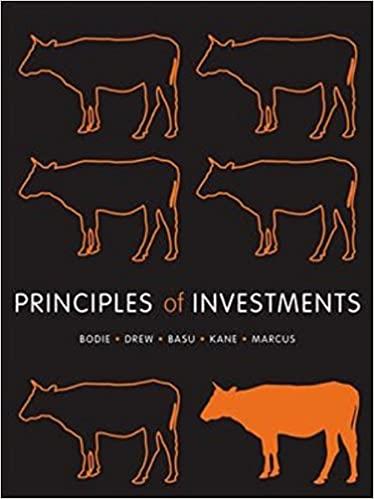Answered step by step
Verified Expert Solution
Question
1 Approved Answer
Consider the following information for stocks A, B, and C. The returns on the three stocks are positively correlated, but they are not perfectly correlated.
Consider the following information for stocks A, B, and C. The returns on the three stocks are positively correlated, but they are not perfectly correlated. (That is, each of the correlation coefficients is between 0 and 1.)
| Stock | Expected Return | Standard Deviation | Beta | ||
| A | 6.75% | 14% | 0.9 | ||
| B | 7.75 | 14 | 1.3 | ||
| C | 8.50 | 14 | 1.6 |
Fund P has one-third of its funds invested in each of the three stocks. The risk-free rate is 4.5%, and the market is in equilibrium. (That is, required returns equal expected returns.)
- What is the market risk premium (rM - rRF)? Round your answer to one decimal place.
%
- What is the beta of Fund P? Do not round intermediate calculations. Round your answer to two decimal places.
- What is the required return of Fund P? Do not round intermediate calculations. Round your answer to two decimal places.
%
- What would you expect the standard deviation of Fund P to be?
- Less than 14%
- Greater than 14%
- Equal to 14%
Step by Step Solution
There are 3 Steps involved in it
Step: 1

Get Instant Access to Expert-Tailored Solutions
See step-by-step solutions with expert insights and AI powered tools for academic success
Step: 2

Step: 3

Ace Your Homework with AI
Get the answers you need in no time with our AI-driven, step-by-step assistance
Get Started


